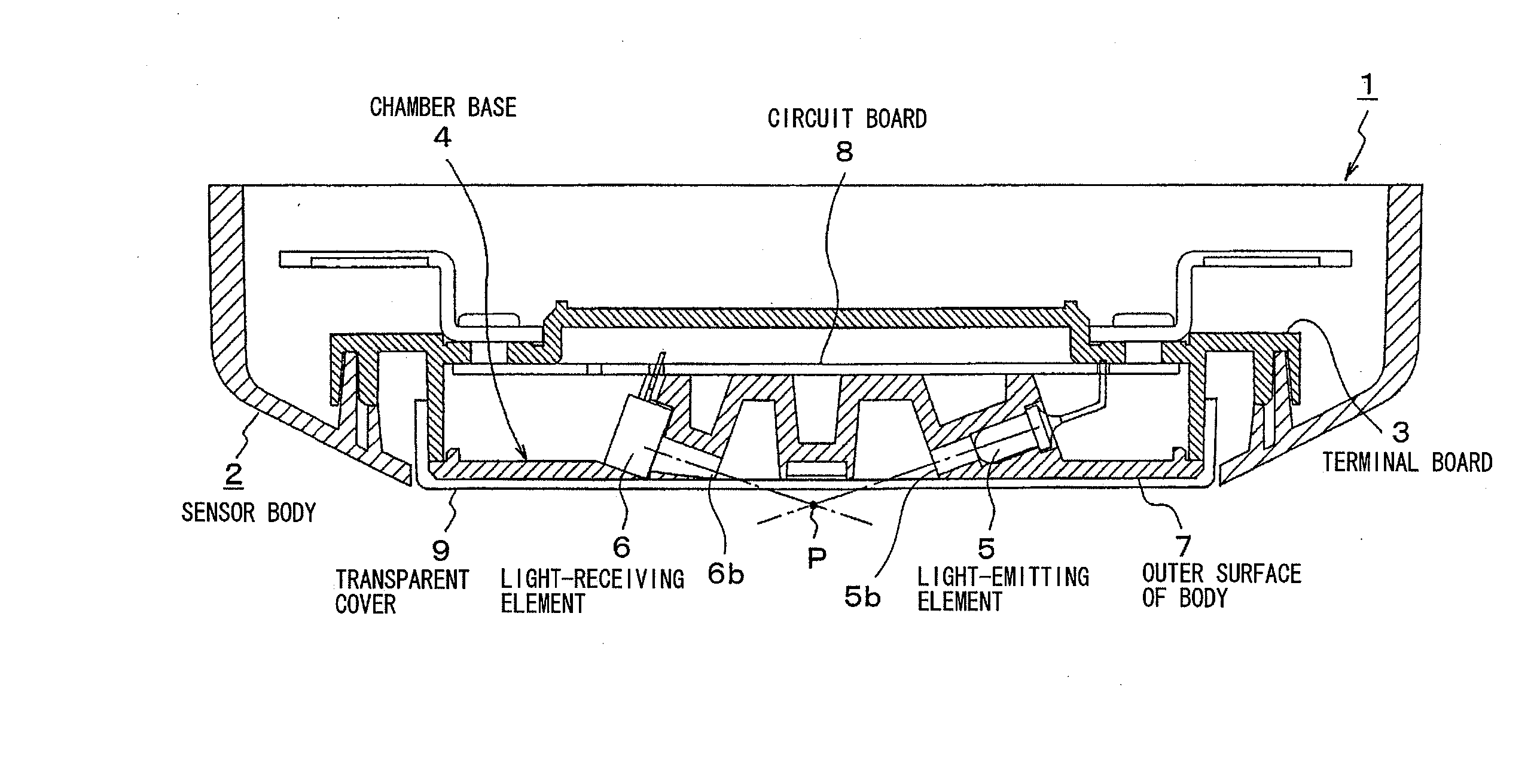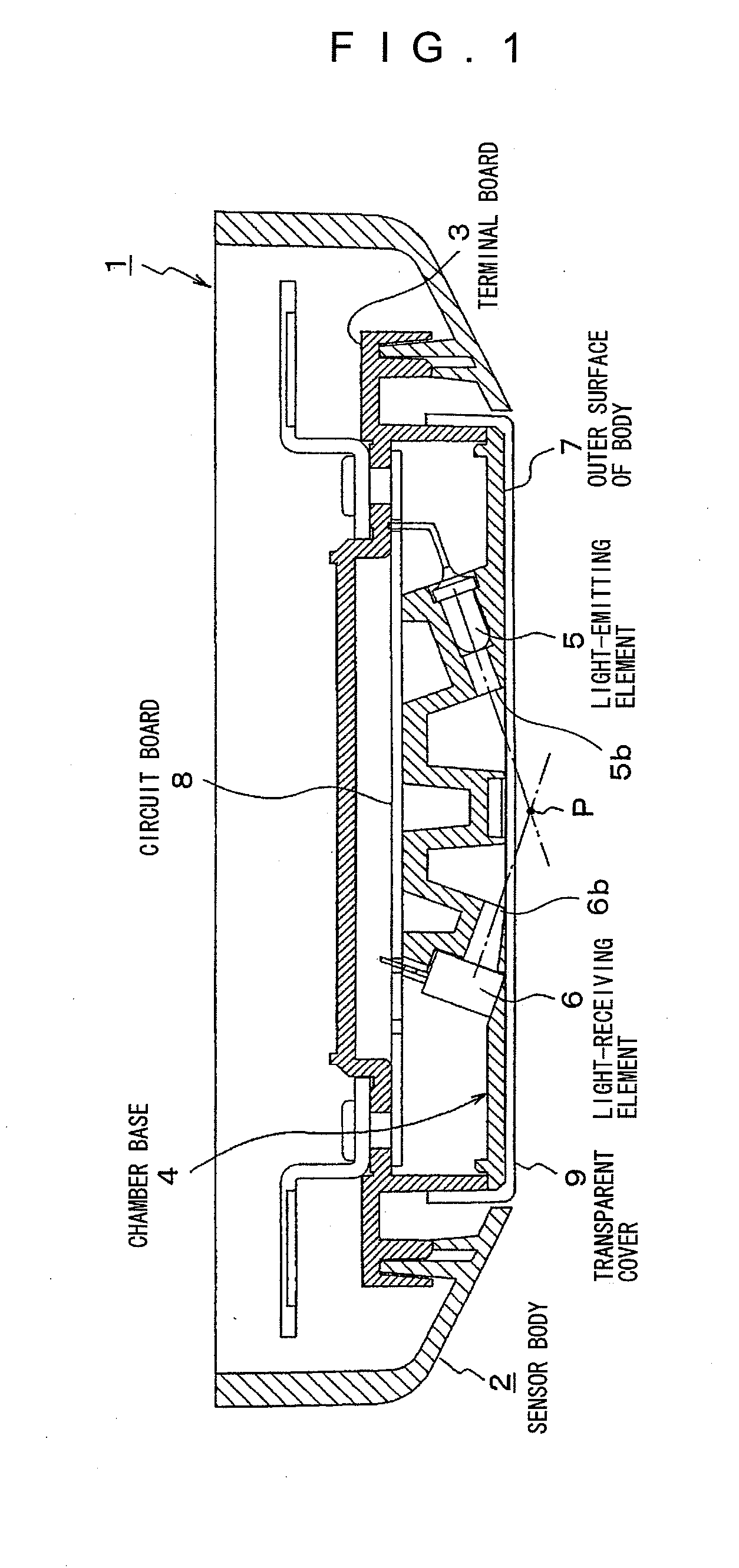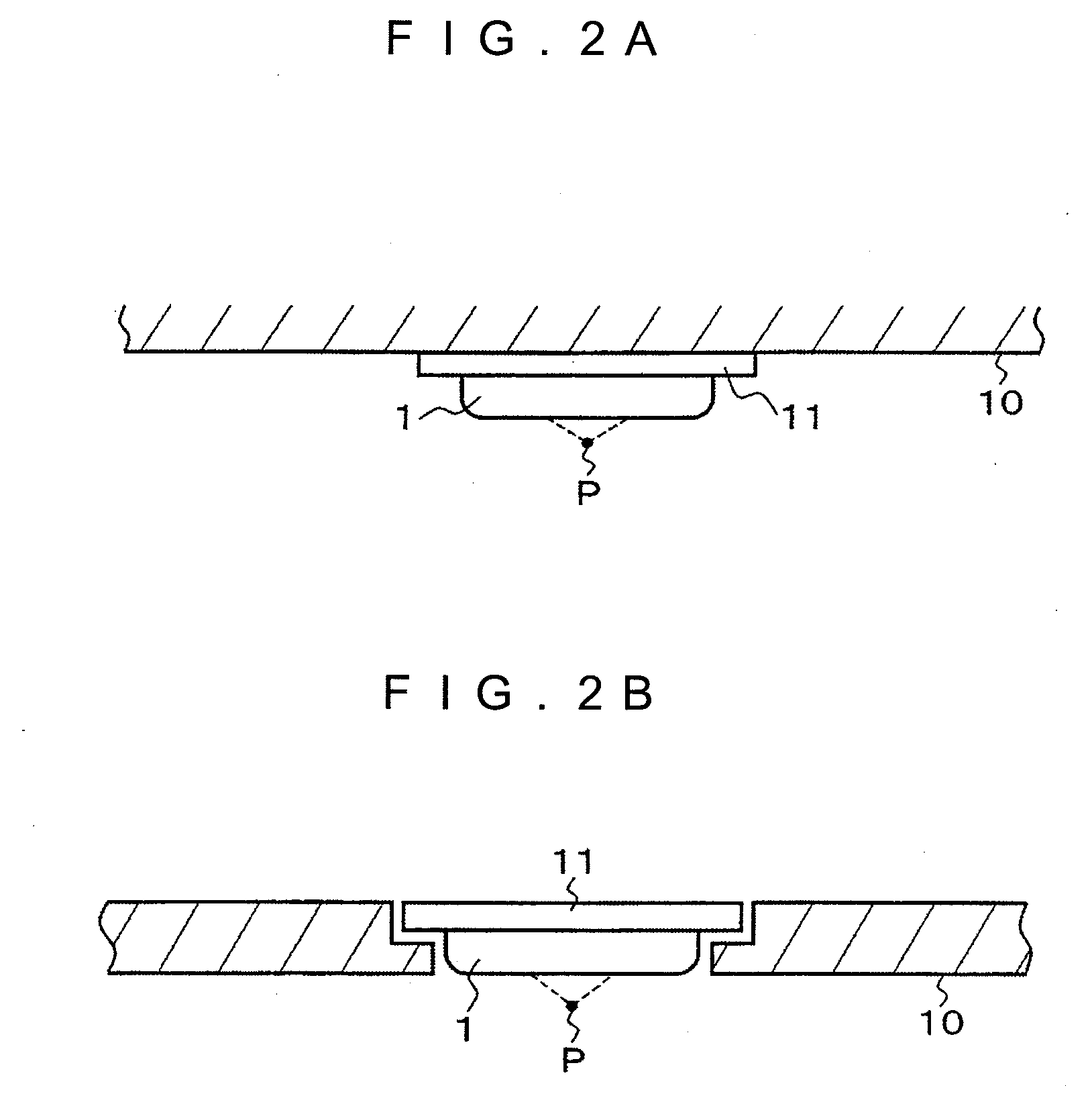Light Scattering Type Smoke Detector
- Summary
- Abstract
- Description
- Claims
- Application Information
AI Technical Summary
Benefits of technology
Problems solved by technology
Method used
Image
Examples
first embodiment
[0120] An outer surface 7 of the sensor body is a lower surface of the chamber base 4 and formed substantially flat, and the transparent cover 9 is attached to the outer surface 7 of the sensor body. Further, the outer surface 7 of the sensor body has a light-emitting opening 5b for ejecting the light emitted from the light-emitting element 5 to the outside of the smoke sensor 1 using scattering light, and a light-receiving opening 6b for introducing light thus ejected and scattered by smoke into the light-receiving element 6. In an outside open space further below the outer surface 7 of the sensor body, a light axis crossing point P is set, at which a light axis of the light-emitting element 5 and a light axis of the light-receiving element 6 mutually intersect with each other, and the light axis crossing point P constitutes a smoke-sensing point. Thus, one of characteristics of the smoke sensor 1 using scattering light is that the smoke-sensing point is set outside the smoke sens...
second embodiment
[0173]FIG. 12 is a perspective view of a chamber base 41 of a smoke sensor 40 using scattering light (partly shown) according to the On the chamber base 41, a light-emitting opening 42 and a light-receiving opening 43 are arranged so as to intersect with each other at a predetermined angle on the outer surface of the sensor body. The light-emitting element 5 not shown is housed inside the light-emitting opening 42, whereas the light-receiving element 6 not shown is housed inside the light-receiving opening 43.
[0174] Next, a relation between light emitting angle and light receiving angle will be described in detail. It should be noted that the present application incorporates Japanese Patent Application (JP-A) No. 2002-4221 filed on Jan. 11, 2002 by the present applicant, and a part of the description below is disclosed in the JP-A 2002-4221.
[0175]FIG. 13A schematically shows an optical positional relation corresponding to the positions at which the light-emitting unit and the ligh...
third embodiment
[0190] Hence, in the third embodiment, in addition to the elimination of the smoke chamber in the smoke sensor for realization of a thinner and smaller smoke sensor, one of the objects is improvement in accuracy of smoke distinction for realization of secure prevention of non-fire alarm.
[0191] Next, the light scattering type smoke sensor according to the third embodiment will be described. FIG. 16 is a sectional view of the light scattering type smoke sensor according to the third embodiment. The smoke sensor 100 using scattering light schematically includes a sensor body 112, a terminal board 113, a chamber base 114, a first light-emitting element 109, a second light-emitting element 110 (not shown in FIG. 16), a light-receiving element 111, and a transparent cover 116. If not specified otherwise, the sensor body 112, the terminal board 113, the chamber base 114, the first light-emitting element 109, the light-receiving element 111, and the transparent cover 116 can be configured s...
PUM
 Login to View More
Login to View More Abstract
Description
Claims
Application Information
 Login to View More
Login to View More - R&D
- Intellectual Property
- Life Sciences
- Materials
- Tech Scout
- Unparalleled Data Quality
- Higher Quality Content
- 60% Fewer Hallucinations
Browse by: Latest US Patents, China's latest patents, Technical Efficacy Thesaurus, Application Domain, Technology Topic, Popular Technical Reports.
© 2025 PatSnap. All rights reserved.Legal|Privacy policy|Modern Slavery Act Transparency Statement|Sitemap|About US| Contact US: help@patsnap.com



